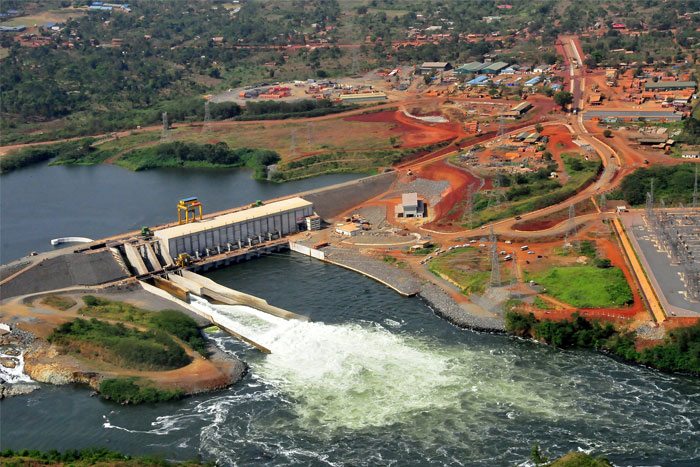
Uganda’s new hydropower plant set to relieve power shortage
Inside the powerhouse at the Isimba Hydropower Plant in the central Ugandan district of Kayunga, engineers subject the first unit of the plant to tests before the official commissioning slated for late January.

The engineers told Xinhua in a recent interview that after the commissioning of the first unit, they will move onto the second, third and eventually the fourth.
The four units of the 183 MW Chinese constructed power plant would be commissioned in a phased manner, according to Xia Nenghai, General Manager of Uganda Branch, China International Water and Electric Corporation (CWE). CWE is the EPC contractor of the project.
Outside the powerhouse, local workers under the supervision of Chinese technicians put final touches on the structural works.
“The civil work, the embankment of the dam, and the powerhouse construction, the installation of the electric, mechanical equipment have been fully completed,” said Xia.
The construction of the USD $568 million power plant located on the Nile River, started in 2015 after Uganda secured a loan from China Export-Import Bank. The power plant is intended to address the country’s electricity shortage, which economic experts said was stalling economic development.
After commissioning of all the units, the plant will generate the installed capacity of 183 MW, which is currently about 19 percent of the country’s power generated. The country generates up to 974.84 MW, which experts say is inadequate and expensive.
When the Isimba power comes on to the national grid, it is expected to partly address the shortfall.
Another Chinese-funded hydropower facility, the Karuma Hydropower Plant, is being constructed and is expected to generate 600 MW. The government anticipates that both the Isimba and Karuma power will address the country’s power shortage.
At the construction site, the workforce has reduced as most of the structural works have been completed. What is now remaining is largely electrical and mechanical works, according to Xia.
At the peak of the construction, there were over 3,000 local workers ranging from semi-skilled to skilled.
Most of the youths who worked at the site gained more skills that they would use even after the project is long completed, according to Xia.
He said although the power plant is Chinese constructed, it has an American design as requested by the Ugandan government.
“We want to bring our Chinese knowledge, skills and management to the Ugandan people so that they can have more capability to work for their nation in future because we cannot stay here forever,” Xia said.
“In future, Ugandans will build their country by themselves, with the correct skills,” he added.
In communities neighboring the construction site, there is noticeable change as what was a small trading center has now expanded. Some of the workers from different parts of the country reside in the Busana trading center.
Xia said most of the employees were recruited from the community and surrounding districts, which explains the development in the area.
CWE also renovated a nearby school, Nakakandwa Primary School. The company, as part of its corporate social responsibility, gave a new face-lift to the school.






